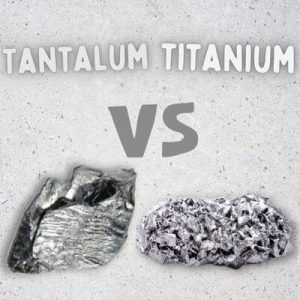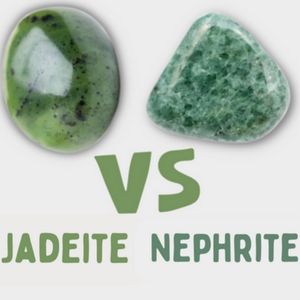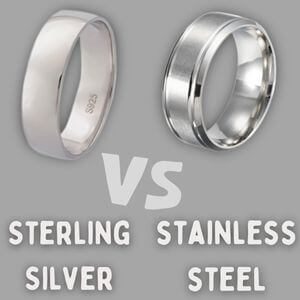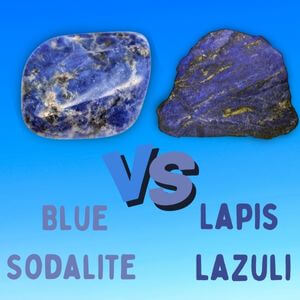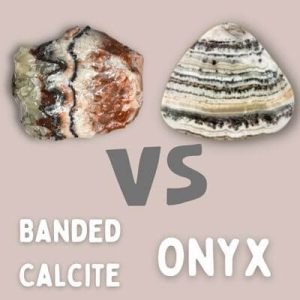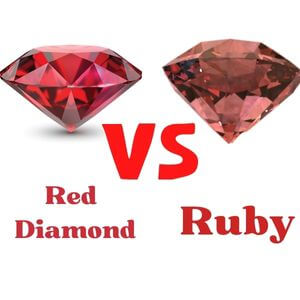Rhodonite VS Rhodochrosite | What’s The Difference (Full Guide)
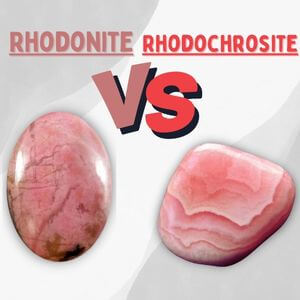

Rhodonite VS Rhodochrosite is a scorching topic. In this post, we will tell you everything about these two stones. Rhodonite and rhodochrosite are prevalent minerals often used for jewelry and other decorative purposes. Though they share some similarities, there are also a few key differences that set them apart.
| Comparison | Rhodonite | Rhodochrosite |
|---|---|---|
| Color | pink-reddish | Pink, Red |
| Chemical Composition | (Mn,Fe,Mg,Ca)SiO3 | MnCO3 |
| Crystal System | triclinic system | Trigonal system |
| Density | 3.5 - 3.7 | 3.7 g/cm3 |
| Diaphaneity | Transparent to translucent | Translucent to subtranslucent |
| Hardness (Mohs scale) | 5.5 – 6.5 | 3.5 – 4.0 |
| Luster | Vitreous to pearly | Vitreous |
| Melting point | 1244 Celsius | 900 - 950 Celsius |
| Refractive Index | 1.733 – 1.734 | 1.60 – 1.82 |
| Specific Gravity | 3.4–3.7 | 3.7 |
| Cleavage | 92.5°; good on {001} | On {1011} perfect; parting on {1012} |
What is Rhodonite?
Rhodonite is a pink to red manganese inosilicate mineral that crystallizes in the form of masses, nodules, or crystals. It typically has a vitreous to pearly luster and a Mohs hardness of 5.5-6.5. In addition, rhodonite often contains black inclusions of manganese oxide, which gives it its distinctive color.

What is Rhodochrosite?
Rhodochrosite is a pink-reddish manganese carbonate mineral that crystallizes in the form of masses, nodules, or crystals. It typically has a vitreous to pearly luster and a Mohs hardness of 3.5-4.5. Rhodochrosite gets its color from the presence of manganese, but it can also contain iron, magnesium, calcium, and other minerals.

Color of Rhodonite and Rhodochrosite:
Both rhodonite and rhodochrosite are pink to red, but rhodonite is typically a deeper, richer red, while rhodochrosite is a lighter, brighter pink.
Uses:
Some of the daily life uses of rhodonite and rhodochrosite are as follows:
Rhodonite:
Rhodonite is used as a gemstone, for carving, and as an ornamental stone. It is also used in the manufacture of rhodonite beads.
Rhodochrosite:
Rhodochrosite is used as a gemstone, for carving, and as an ornamental stone. It is also used in the manufacture of rhodochrosite beads.
Jewelry: Rhodonite VS Rhodochrosite:
Rhodonite and rhodochrosite are both popular choices for jewelry. Rhodonite is often used in rings, earrings, pendants, and bracelets, while rhodochrosite is most commonly used in rings and pendants.
Chemical Composition: (Rhodonite VS Rhodochrosite)
Rhodonite has the chemical composition of (Mn, Fe, Mg, Ca)SiO3, while rhodochrosite has the chemical composition of MnCO3. Some other differences are as follows:
- The crystal system of rhodonite is triclinic, while rhodochrosite is Trigonal.
- Rhodonite typically has a vitreous to pearly luster, while rhodochrosite typically has a resinous to submetallic luster.
- Rhodonite often contains black inclusions of manganese oxide, while rhodochrosite does not typically have these inclusions.
- Rhodonite typically has a pink to red color, while rhodochrosite typically has a pink-reddish color.
- Rhodonite has a specific gravity of 3.4 – 3.7, while rhodochrosite has a specific gravity of 3.5 – 3.7.
- Rhodonite is brittle with a conchoidal fracture, while rhodochrosite is brittle with an uneven splintery fracture.
- Rhodonite has a refractive index of 1.733 – 1.734, while rhodochrosite has a refractive index of 1.60 – 1.82.
- Rhodonite typically has double refraction of 0.008-0.010, while rhodochrosite does not have double refraction.
- Rhodonite has a dispersion of 0.013, while rhodochrosite has a dispersion of 0.016.
- Rhodonite is optical biaxial (-), while rhodochrosite is optically uniaxial (-).
- Rhodonite has pale pink, pink, and dark red pleochroism, while rhodochrosite has a pale pink and rose-red pleochroism.
- Rhodonite has a hardness of 5.5 – 6.5 on the Mohs scale, while rhodochrosite has a hardness of 3.5 – 4.0 on the Mohs scale.
Geologic Occurrence: (Rhodonite VS Rhodochrosite)
Rhodonite typically occurs in metamorphic rocks, while rhodochrosite typically occurs in sedimentary rocks. Rhodonite is found in Argentina, Austria, Brazil, Canada, Czech Republic, Finland, France, Germany, Greece, India, Italy, Japan, Kazakhstan, Mexico, Mongolia, Nepal, Norway, Pakistan, Russia, South Africa, Spain, Switzerland, UK, USA. Rhodochrosite is found in Argentina, Bolivia, Brazil, Canada, Chile, China, Czech Republic, Germany, Greece, India, Italy, Mexico, Peru, Poland, Romania, Russia, South Africa, Spain, Switzerland, the UK, USA.
Mining: (Rhodonite VS Rhodochrosite)
Rhodonite is mined in Australia, Brazil, Canada, China, Finland, Germany, India, Italy, Japan, Mexico, Nepal, Russia, South Africa, Spain, Switzerland, the UK, USA. Rhodochrosite is mined in Argentina, Bolivia, Brazil, Chile, China, the Czech Republic, and Peru.
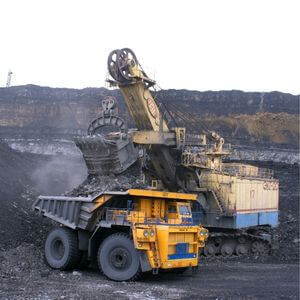
Processing: (Rhodonite VS Rhodochrosite)
Rhodonite is typically, Likewise processed into rhodonite beads. Likewise, rhodochrosite is generally processed into rhodonite beads.
Rhodonite VS Rhodochrosite: The Verdict
Rhodonite and rhodochrosite are beautiful stones used in jewelry and other decorative applications. Rhodochrosite is Rhodochrositeharder than rhodochrosite, but rhodochrosite typically has a more vibrant color. Rhodonite is found in metamorphic rocks, while rhodochrosite is found in sedimentary rocks.
Price:
Rhodonite is typically more expensive than rhodochrosite because it is less common and has a more rigid surface. On the other hand, rhodochrosite generally is less costly than rhodochrosite because it is more common and has a softer texture.

Which one should I buy?
If you are looking for a rigid and beautiful stone for jewelry or other decorative applications, rhodonite is a good choice. On the other hand, if you are looking for a stone with vibrant color, rhodochrosite is a good choice. Ultimately, deciding which stone to buy depends on your preferences.
Conclusion:
Rhodonite and rhodochrosite are two beautiful stones that have different properties. Rhodonite is harder than rhodochrosite, but rhodochrosite typically has a more vibrant color. Furthermore, rhodonite is found in metamorphic rocks, while rhodochrosite is found in sedimentary rocks. If you are looking for a durable stone for jewelry or other decorative applications, rhodonite is a good choice. On the other hand, rhodochrosite is a good choice if you find a stone with appealing color. Ultimately, deciding which stone to buy depends on your preferences.
